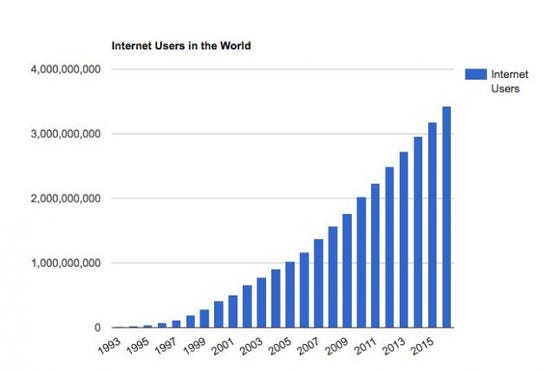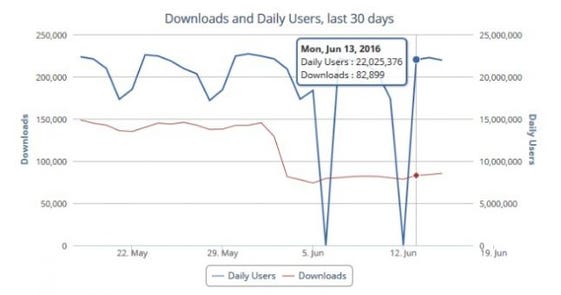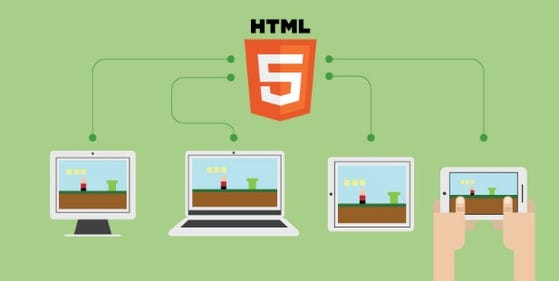Trending
Opinion: How will Project 2025 impact game developers?
The Heritage Foundation's manifesto for the possible next administration could do great harm to many, including large portions of the game development community.
This study is focused on games and how they affect the modern marketing strategies.

We live in a digital age dominated by the internet and all technologies that use the internet as a foundation. According to InternetLiveStats, around 40% of the world population has access to the internet, using any type of device or any connection.
That is over 3 billion people, and the number of users is only trending upwards.
This study is focused on games and how they affect the modern marketing strategies. It is very important to point out that games have evolved alongside the Internet. Ever since it was possible to send a line of text from one part of the world to another, people have been using that to play just as much as to exchange more “serious” information.
This is important to bear in mind, because the internet users and gamers, who grew up with these changes, are now the key target audience for companies around the world. Generation X now consists of men and women of the world with jobs, and they are big consumers of digital technologies they grew up with. The internet has permeated every aspect of their lives, including the way they spend money.
The majority of modern-day target audience were around and used the internet during the dot.com bubble in the late 90’s, and they have witnessed the aggressive marketing methods initially used by companies trying to sell their product. Pop-ups, pop-unders, Flash adds, sound jungles embedded in web pages - these were practices that worked at the moment, but they came with a downside.
The downside is that the internet users grew partly desensitized to the standard methods of advertising, and fed up with the more aggressive methods. Eventually, there were enough options for them to get the information they want that doesn’t employ those practices that they could just never visit a website or use a service they felt was treating them as little more than a pair of eyeballs for the marketing.
Which brings us to today, where it’s commonplace for users to employ various ad blockers and methods of subverting or ignoring the message companies are trying to present them with.
Look at the AdBlock Plus addon daily stats:

It shows peaks of over 22 million active users daily, and over 140,000 downloads daily - placing its averages somewhere close to 19 million users daily and over 100.000 downloads daily. And this is just one (granted, most popular) method of subverting adds. There are much more, and it is estimated that about ¼ to ⅓ of all of the marketing content is being blocked in one way or another, depending on the platform used.
This is only for the digital marketing. Traditional marketing is even less cost effective. It is estimated that you need to spend $500 to reach 2000 potential customers through a magazine, $900 to reach the same number of clients via direct mail. While campaign TV advertisements on a national network have better price/viewer ratio, it is still around $100-$150 per 2000 views, which is almost double the price of advertising through social networking.

That means companies have to find some other way of presenting their product or getting the message across. One good strategy of doing that without annoying the target audience is by using games.
Using games as a marketing tool is not a new practice at all. Take for instance the friendly rivalry Pepsi and Coca-Cola have developed over the years. Back in 1983, one of the battlegrounds these two beverage and food giants played on was a small game made by Coca-Cola. The game was a “Space Invader” clone that let the player shoot down letters “Pepsi” and a big Pepsi symbol, after which you get big flashing letters “Coke Wins!!!”
This is just one example, and one method of big brands successfully using games as a form of marketing tool. The In-game advertising models have been successfully used over the last decade and a half and is expected to “rock the mobile world” according to Forbes.
But gamification of advertising offers so much more than mere product placement. While that seems like the most logical (and easiest) way to reap the benefit of creating a game for marketing purposes, there are benefits that are much harder to quantify.
Instead of treating a game like a canvas to paint the advertisement on, think of it as a way to get closer to your target audience in a way that will not make them reel back from having something sold to them, and as an opportunity to build up a fan base around your brand that is connected to you not directly, but through a game. You do this by putting out a game that brings more value to the player than it has to you as a brand.
Some of that can be seen in Betadine Germ Smash game. It’s a simple game with a very basic gameplay similar to that of old Galaga, with fungi and infections dropping down on the teeth/tongue which is the playfield, and the player has to control the medication that gets rid of the “attackers”.

It’s as basic as the gameplay gets, but it’s more than just a simple product placement for Betadine. It also teaches the player the type of treatment different infections and symptoms require - salt water is very powerful against one type of enemies, while lemon water is suitable for the other. It’s the little things, but it turns a game into more than a game, it turns it into a learning tool that the end user has benefited from even after they put the game down.
And this is why the existence of this game is an overall positive effect on Betadine as a brand. The players will gain something through their game that will stay with them even outside of the game, and will associate that knowledge with Betadine brand.
Which brings us to something big brand companies have to take into the account when they think whether or not to use a game as a marketing medium. A good game can buy you something no amount of advertising can get you - it can buy you a lot of good will with the players, and, if the game is made well enough, a loyal fan base.
This goes beyond simple brand recognition. A good game can turn a player into a fan in a number of ways. Look at the Kim Kardashian: Hollywood on Apple store. It is firmly entrenched as one of the top free games in the store, even two years after its release, and it’s still getting positive votes and reviews from the fans. It is, also, still being developed - new features are being added from time to time, as a reward for the loyal fans. The game has had over 42 million downloads, and the players have spent over 3200 years of play time in it combined according to the GameSpot article. It has generated over $100,000,000 in direct income in the first six quarters, and shows that with a game, you can make your players into more than just potential customers for your brand or product, you can turn them into fans, which is much more attractive.

A good game will keep players coming back to it and will have him get his friends into it, especially if the game has a social/multiplayer component. Look at it this way - how much money does a company need to spend to get a thousand shares or retweets.
However, if they have a game with a decent player base, and if one of the daily rewards requires players having to share their high score (or element of the game progress), which, conveniently, has a brand logo embedded in the shared picture, they will do so with pleasure. That is because they are being rewarded for the effort - in-game badges, currency or cosmetic awards keep them coming back and doing so over and over again, with no action that needs to be taken on your part.
Some of the rewards you can use as an incentive for the players to engage in social sharing include:
*a power up
*a cool new animation
*a badge
*a new move
With these well-designed, players will happily do your marketing for you if you provide them with the right rewards.
This comes from a very powerful combination of convenient digital technologies and positive reinforcement. If your game is mobile, and it can be played during any idle time, it keeps the player thinking about your game in his or her free time, which, in turn, garners more good will towards your product. Combine that with the general brand recognition, and you’ve got a great incentive to invest in digital technologies and gaming to promote your message.
But, none of these facts are news, so why is this more relevant today than it was a few years ago? Short answer is - HTML5 technology. One of the very basic building blocks of the internet has grown and became complex enough that there are now game developers specializing in making small and medium sized internet games using nothing but HTML5.
And one of the best things about HTML5 is that it is multi-platform - a game made in HTML5 will run on a computer just as well as it will run on a tablet.

Combine this with a reasonably low production cost (especially compared to AAA game titles), with the fact that over half of the world population is already using handheld devices to connect to the internet instead of desktop or laptop computers, and you’ve got marketing potential that just can’t be ignored. A single good game can do your brand the world of good, and even a game that wasn’t received by millions around the world will still garner you more than enough of the support to justify the cost.
Having a low barrier to entry is another significant aspect of promotional HTML5 games. Since they don’t sport the high fidelity graphics, AAA titles do but rely more on the consumer already being interested in the brand or a service they are attempting to promote, they don't cost too much to develop.
Take for instance Toyota NHRA, a HTML5 multiplayer + Chromecast game developed for the world-popular car manufacturer for their live event. The game is allows two players to race and compares their score to other people’s scores. It was extremely popular at a live Toyota event, as the visitors had the chance to face off against each other.

Since HTML doesn’t use as many resources as Flash and has far fewer security holes, it’s a logical choice for companies that want something simple and yet robust to introduce to their current and potential customers.
Smartphones, tablets, laptops and desktop computers can all run HTML5 pages, which makes the potential audience a game connected to a specific brand can reach massive, which is something big and small companies alike recognized and are trying to garner as much goodwill for a low investment as they possibly can.
You May Also Like